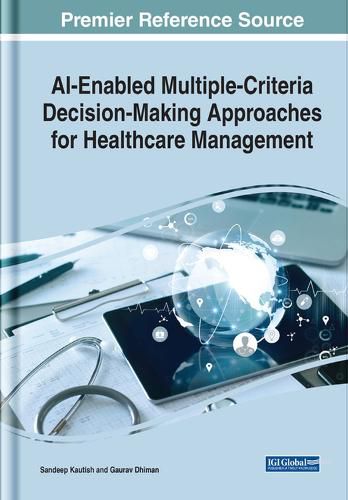Readings Newsletter
Become a Readings Member to make your shopping experience even easier.
Sign in or sign up for free!
You’re not far away from qualifying for FREE standard shipping within Australia
You’ve qualified for FREE standard shipping within Australia
The cart is loading…






This title is printed to order. This book may have been self-published. If so, we cannot guarantee the quality of the content. In the main most books will have gone through the editing process however some may not. We therefore suggest that you be aware of this before ordering this book. If in doubt check either the author or publisher’s details as we are unable to accept any returns unless they are faulty. Please contact us if you have any questions.
The success of healthcare decision-making lies in whether healthcare staff, patients, and healthcare organization managers can comprehensively understand the choices and consider future implications to make the best decision possible. Multiple-criteria decision making (MCDM), including multiple rule-based decision making (MRDM), multiple-objective decision making (MODM), and multiple-attribute decision making (MADM), is used by clinical decision-makers to analyze healthcare issues from various perspectives.
In practical health care cases, semi-structured and unstructured decision-making issues involve multiple criteria (or goals) that may conflict with each other. Thus, the use of MCDM is a promising source of practical solutions for such problems. MCDM methods mainly include the three parts: data process, evaluation and selection, and planning and design. Data process focuses on analyzing and identifying healthcare management issues and data features for solving practical cases. Evaluation and selection focus on evaluating the performance of each solution for healthcare management, and these methods can be used to support decision-making and help organizations choose the best solution for practical healthcare management cases. Finally, planning and design focus on analyzing and designing the goals of healthcare management applications, which can be modelled as a minimizing or maximizing problem for finding the optimal solutions. Furthermore, these methods can explore the relationship structure construction among criteria between various related issues arising from healthcare.
$9.00 standard shipping within Australia
FREE standard shipping within Australia for orders over $100.00
Express & International shipping calculated at checkout
This title is printed to order. This book may have been self-published. If so, we cannot guarantee the quality of the content. In the main most books will have gone through the editing process however some may not. We therefore suggest that you be aware of this before ordering this book. If in doubt check either the author or publisher’s details as we are unable to accept any returns unless they are faulty. Please contact us if you have any questions.
The success of healthcare decision-making lies in whether healthcare staff, patients, and healthcare organization managers can comprehensively understand the choices and consider future implications to make the best decision possible. Multiple-criteria decision making (MCDM), including multiple rule-based decision making (MRDM), multiple-objective decision making (MODM), and multiple-attribute decision making (MADM), is used by clinical decision-makers to analyze healthcare issues from various perspectives.
In practical health care cases, semi-structured and unstructured decision-making issues involve multiple criteria (or goals) that may conflict with each other. Thus, the use of MCDM is a promising source of practical solutions for such problems. MCDM methods mainly include the three parts: data process, evaluation and selection, and planning and design. Data process focuses on analyzing and identifying healthcare management issues and data features for solving practical cases. Evaluation and selection focus on evaluating the performance of each solution for healthcare management, and these methods can be used to support decision-making and help organizations choose the best solution for practical healthcare management cases. Finally, planning and design focus on analyzing and designing the goals of healthcare management applications, which can be modelled as a minimizing or maximizing problem for finding the optimal solutions. Furthermore, these methods can explore the relationship structure construction among criteria between various related issues arising from healthcare.